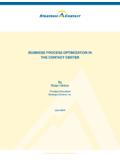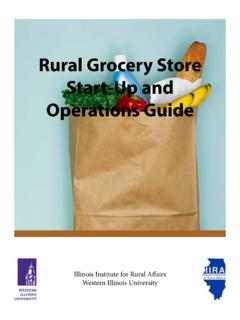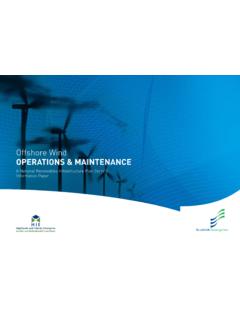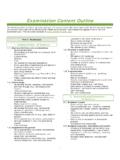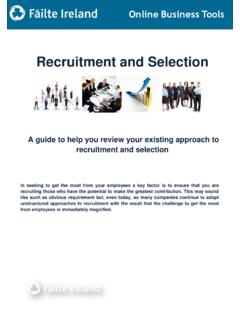Transcription of Cost Structure and Distribution in Today's Contact …
1 2008 Strategic Contact , Inc. All Rights ReservedCOST Structure AND DISTRIBUTIONIN today S Contact CENTERSBY LORI BOCKLUND, PRESIDENTAND BRIAN HINTON, SENIOR CONSULTANTSTRATEGIC Contact , INC. March 2008 WHITE PAPER 2008 Strategic Contact , Inc. All Rights ReservedTABLE OF FOR ..1 Tools and Approach ..2 Factors and Variables Factors and Variables Key Inputs for Sensitivity Key cost cost per THE RESULTS TELL INPUT Annual Total cost of Ownership Included in Each Variable Values for Each iWHITE PAPER 2008 Strategic Contact , Inc. All Rights ReservedABOUT THE AUTHORSA uthors Lori Bocklund and Brian Hinton are senior executives at Strategic Contact , Inc., an independent consulting fi rm that helps companies optimize the strategic value of their customer Contact technology and operations.
2 The fi rm helps companies develop and execute plans tied to business Bocklund, PresidentLori is a recognized industry leader in Contact center strategy, technology, and operations. During her more than 20 years in the call center industry, including 15 as a consultant, she has worked with a broad spectrum of systems, applications, and operational environments. She shares her knowledge and experience through speaking engagements, articles, a two-day call center technology course, and the book she co-authored, Call Center Technology Demystifi ed (Call Center Press). Lori has a in Electrical Engineering from South Dakota State University and an in Electrical Engineering from The George Washington Lori Bocklund at or Hinton, Senior ConsultantBrian has extensive experience as an executive manager in businesses ranging from start-ups to multi-million dollar companies.
3 He has been involved in the design, development, application, and support of an activity-based planning and analysis tool for Contact centers, conducting many consulting projects focused on process-driven analysis. Brian retired from the Navy as a Commander. He has consulted in the call center industry for eight years, analyzing the business value of technology implementations and process changes. Brian has authored several key fi nancial planning models used by Fortune 50 companies. He has an in Business Administration from Harvard Business School, Harvard University and a in Business Administration from the University of Brian Hinton at or 706-310-0544. INTRODUCTIONFor years, Contact center professionals of all sorts vendors, consultants, analysts, media, practitioners and leaders in both operations and technology have been quoting statistics about the relative costs of Contact centers.
4 Most of us have seen pie charts that show labor as the biggest slice of the pie, with various breakdowns of the other elements, such as network/telecommunications, technology, real estate and utilities, and overhead costs. Analysts and vendors occasionally publish their view of the cost Structure . Various surveys, including one we co-sponsor through our partner Centerserve, gather input from participants to get insights into their Contact center cost allocations. While the fact that labor is the highest cost is self evident, the ranges in what percent labor consumes can range from 55-80% in these various sources. Network and telecommunications costs have plummeted over the last decade, and so perhaps those costs consume a smaller portion than they have historically. Then again, maybe not, as centers do more and more complex and interesting things with their networks.
5 Readers must take survey or benchmarking results with a grain of salt, as no two Contact centers defi ne their budgets elements in the same way both in terms of what is included and excluded, and how the costs are calculated. Is IT a direct charge, or an internal charge back? Is it potentially infl ated? Is IT staff included in the technology cost ? Is labor an hourly rate or a loaded cost ? Does the company allocate rent and utility costs to the center? With such a range of variables, we began to wonder how costs really are distributed in a Contact center today and we set out to put some clarity to the white paper is a result of that curiosity about what the costs really look like in today s economy of low cost but potentially high functionality telecommunications networks, high cost labor (with correspondingly high turnover), robust technology, and high- cost real estate.
6 We think it s important to understand the Structure of the cost of a Contact center, as it could (and should!) infl uence strategic investment decisions, organizational, process, or technology changes, and tactical adjustments that might have more wide-ranging impacts on overall operational costs. And we think it is important to base these numbers not on surveys or historical data, but rather on modeling analysis that uses operating costs that are representative of today s Contact centers and looks at true cost to the business. Our approach was to model Contact center costs for three representative centers small, medium, and large using a process-based analysis approach and comprehensive modeling tool. We thought it was important to vary the key elements that can change a center s makeup such as self-service technology and see what impact it has on the cost Distribution .
7 Our goal in this analysis is to drive out clear, consistent cost breakdown numbers, as well as cost per Contact numbers that represent best practices and show the impact of key changes. CONTEXT FOR ANALYSISWe ll admit this task is not a trivial one and can t match everyone s world, as so many variables with such potentially wide-ranging values exist. However, we believe the analysis results provide solid, defensible representative numbers that Contact center professionals can put in their back pocket to infl uence tactical or strategic decision making with some true modeling-based data with clear defi nitions of cost elements. We don t believe this is the end-all for fi nancial considerations for centers, but it can serve as a good starting point for centers to identify where to dig deeper and do more specifi c analysis for their 1 2008 Strategic Contact , Inc.
8 All Rights ReservedPg. 2 TOOLS AND APPROACHIn a study like this, the modeling approach and tools are important. For each variable that changes to have an impact on the cost , the model s Structure must ensure that variables drive costs. The model must ensure that linkages and components are inter-related and respond appropriately as each variable changes. We used the same approach and tools1 in our modeling for this paper that we recommend and use with our clients: process-driven analysis. Visit the Strategic Contact website ( ) for white papers discussing the approach, value and credibility of process-driven built three models producing a three-year operating budget projection in each model: small Contact center, medium Contact center and large Contact center. The following variables drive costs and can vary in each model.
9 Call and email statistics2 Volumes (including growth rates) Handle times After call work Abandon rate Queue time Fixed staffi ng (management) FTEs - VP - Managers - Analysts - Trainers/QM Salaries Benefi ts Taxes Variable staffi ng (agents and supervisors) FTEs (driven by work volume and productivity) - Call agents - Email agents - Supervisors (driven by supervisory ratio) Productivity (which determines FTEs required based on projected work) - New employee training days - Ongoing training - Attrition - Absence - Meetings - Occupancy/effi ciency Wages Benefi ts Taxes Hiring Costs1 Strategic Contact uses Primary Matters tool, The Guide, in conducting process-driven analysis.
10 Visit Given current typical media Distribution , we used phone as the predominant media, with some email handling in the medium and large centers. 2008 Strategic Contact , Inc. All Rights ReservedPg. 3 Technology Investment Depreciation period Tech support (fi xed labor) Facilities Space per cubicle Cubicle sharing Rent Build-out, maintenance, utilities and upkeep Telecom and Networking Telecom rate per minute Cell phones VoIP and telephony infrastructure Miscellaneous overhead Travel costs Other overhead Chargeback for services from other departmentsFACTORS AND VARIABLES CONSIDEREDV ariables that can impact Contact center costs include industry, size, location, and number of locations.



